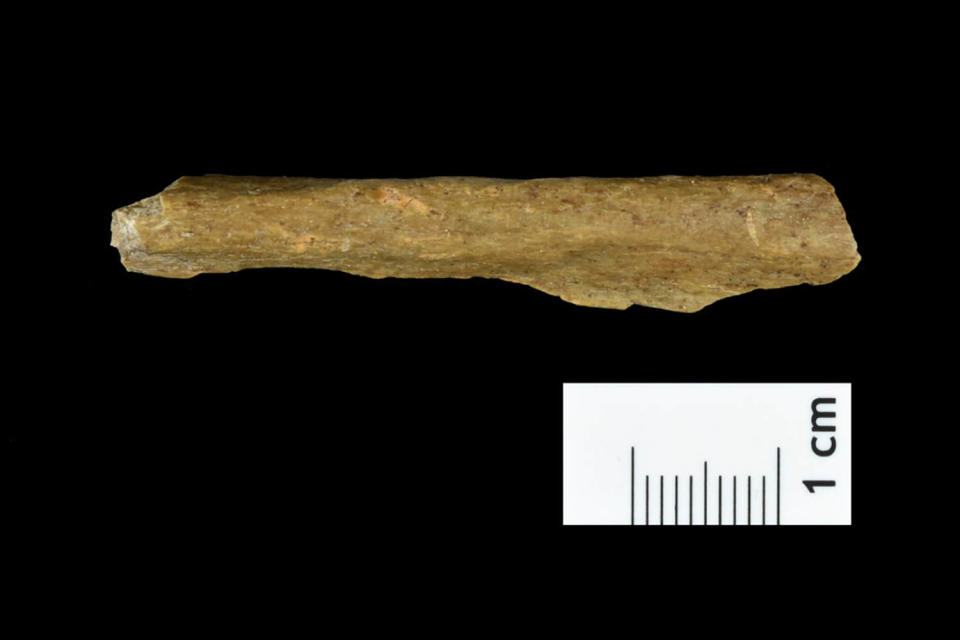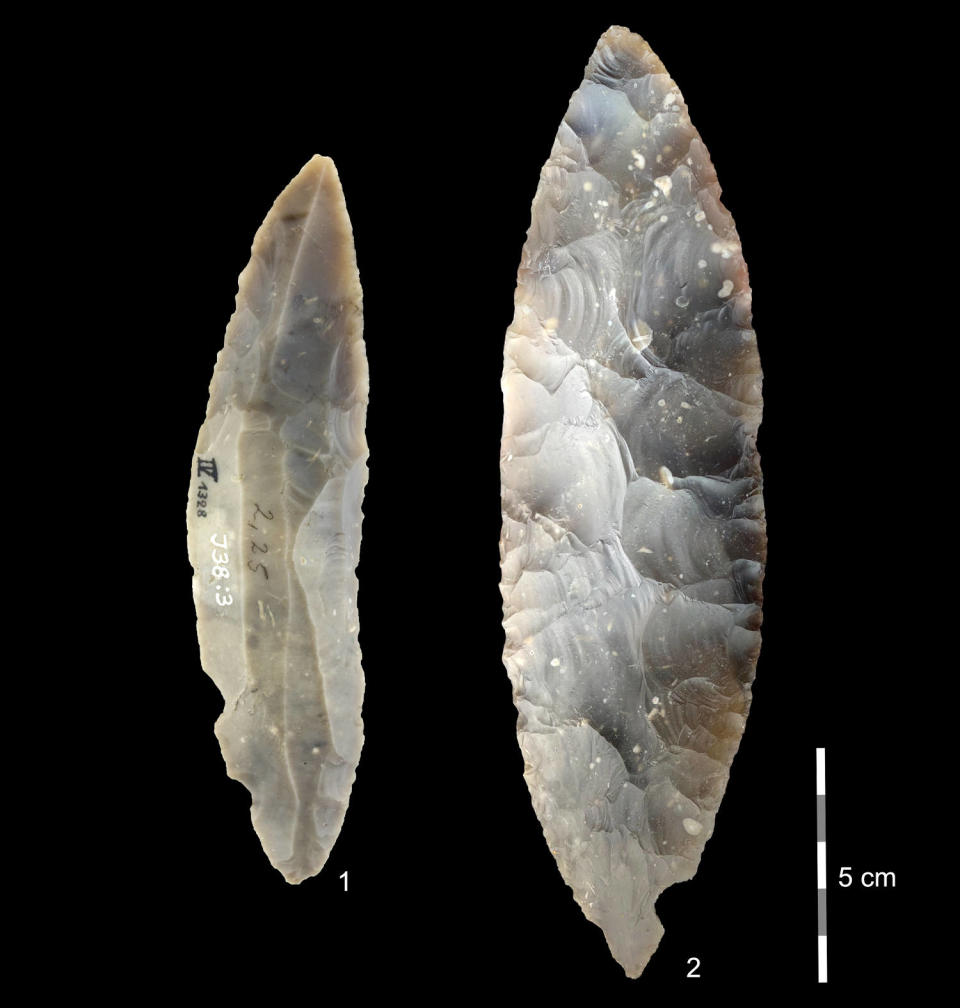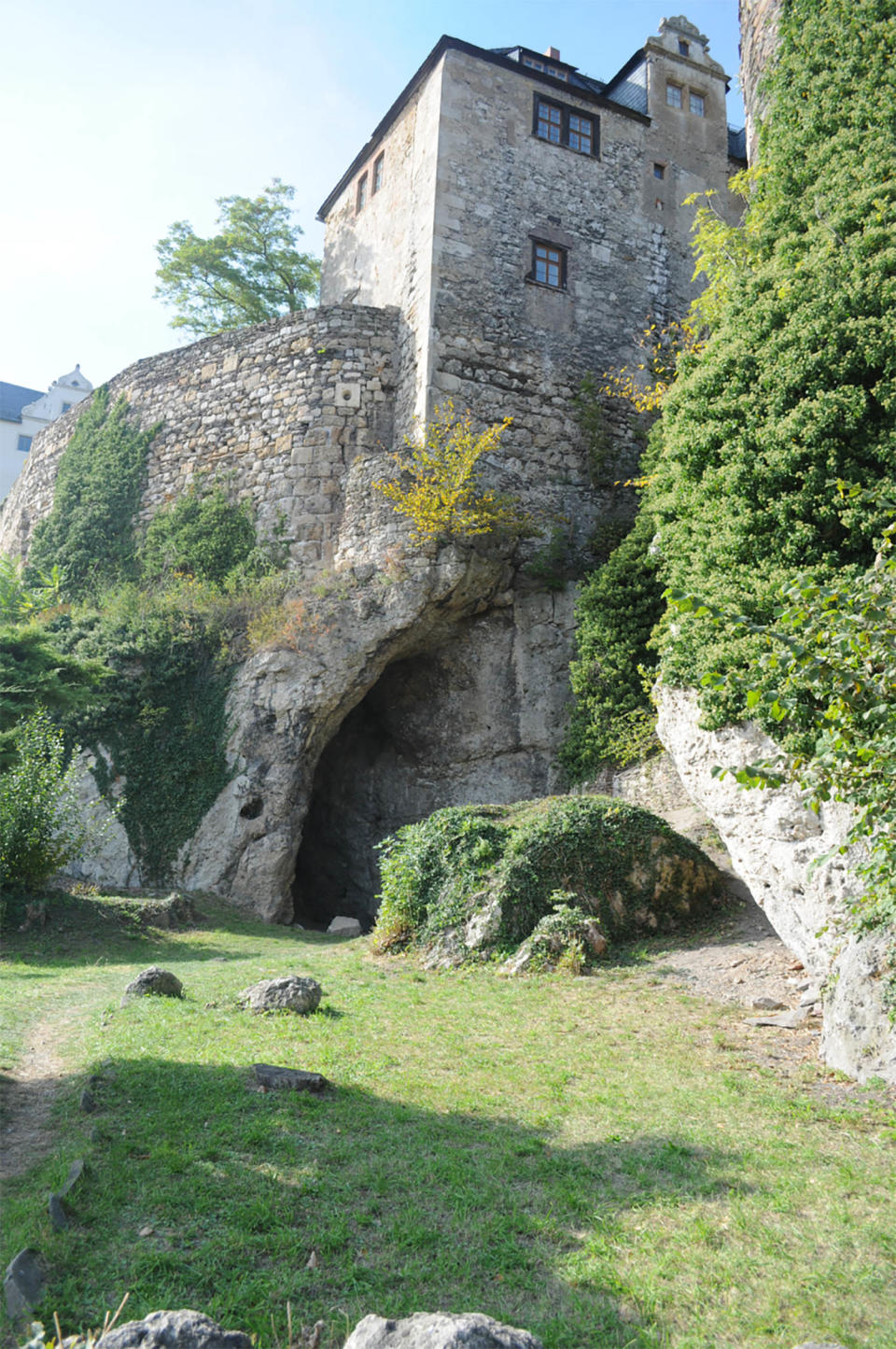Researchers have discovered a pit of bones in a cave beneath a medieval German castle that could reveal the secrets of early humans.
The remains buried in layers of soil in the collapsed cave contained genetic material from 13 bones belonging to cave bears, hyenas and early humans who died about 45,000 years ago.
The findings, described in a trio of papers published Thursday in the journals Nature and Nature Ecology & Evolution, show that early humans moved north earlier than scientists expected, that they were able to make spear-shaped tools, and that later humans achieved this. Resources needed to thrive in temperatures much colder than today’s climate.
The discoveries, likely made due to the development of new DNA technology, are reshaping how scientists understand the time when both humans and Neanderthals walked the European continent.
“We know that there was a large overlap between Neanderthals and humans because of the age and location of this region,” said Elena Zavala, a paleo and forensic geneticist at the University of California, Berkeley, who helped write the three studies. The species likely roamed the same landscape for hundreds, perhaps thousands, of years.

The discoveries could bring scientists closer to understanding why Neanderthals eventually went extinct and the role humans played in their extinction.
John Hawks, a paleoanthropologist at the University of Wisconsin-Madison who studies ancient human relatives but was not involved in this research, said the study helps solidify the theory that distinct human cultures developed as Neanderthals neared their end.
“These groups are investigating. They are going to new places. They live there for a while. “They have different lifestyles,” he said of the first humans. “They easily enter areas where Neanderthals live.”
These discoveries were only possible because previous researchers left no stone unturned. In the 1920s and 1930s, archaeologists had previously excavated the Ilsenhöhle cave beneath Ranis Castle in Thuringia, Germany. The castle was built over the cave long before any excavation took place.
At that time, the scientists hit a rock more than 1.5 meters thick, which prevented them from entering important layers of the collapsed cave.
The researchers returned in 2016, armed with modern digging technology and new forms of analysis. About 24 feet below the surface, they found layers containing spearhead-like leaf tips and human bone fragments.
The discovery of human bone fragments led researchers to excavate material excavated nearly ninety years ago; They also found additional skeletal parts there.


“It was an unexpected and fantastic surprise to find human remains mixed with animal bones that had been stored for almost a century,” paleoanthropologist Hélène Rougier of California State University Northridge said in a news release.
Researchers were able to identify 13 bone fragments in total. DNA analysis confirmed that the bone fragments belonged to humans and that some were linked to the same person or a family member. Tests on animal bones found nearby show that the climate was harsh enough to be comparable to modern-day Siberia.
This means humans thrived in extreme climate conditions around 45,000 years ago.
“These early modern humans appear to have specialized or assembled a cultural package that would have enabled them to be more successful than Neanderthals in northern latitudes,” Hawks said.
The study also suggests humans used leaf point technology, which scientists once attributed to Neanderthals.


“Making these is a completely masterful process,” Hawks said of leaf points, which are thinned pieces of rock shaped like olive leaves. “The fact that people expended energy to do this beautiful thing tells us about their social system. It tells us that they were not living hand to mouth. They had time to invest.”
The fate of Neanderthals has been a hot topic of debate. Has a change in climate devastated them? Did people kill them? Did they melt into humanity as species interbred?
Today, many people still have some Neanderthal DNA in their genetic code, depending on their ancestry.
More sophisticated genetic testing on Ranis bone fragments, an ongoing project, could detect whether traces of Neanderthal genes are present in the recently discovered bone fragments.
“The real question is: Is there Neanderthal DNA? “Could these people potentially have mixed with Neanderthals?” said Zavala.
Answers to questions like these in Ranis could help answer questions specific to our species’ existence, researchers say.
“It pursues the question of what makes us human. 100,000 years ago, worldwide, there were numerous hominin species on the planet,” Zavala said, referring to humanity’s close genetic relatives.
“It’s just us now. Why did this happen? “How did evolution get to where we are now, and what does this mean for our future?”
This article first appeared on NBCNews.com.